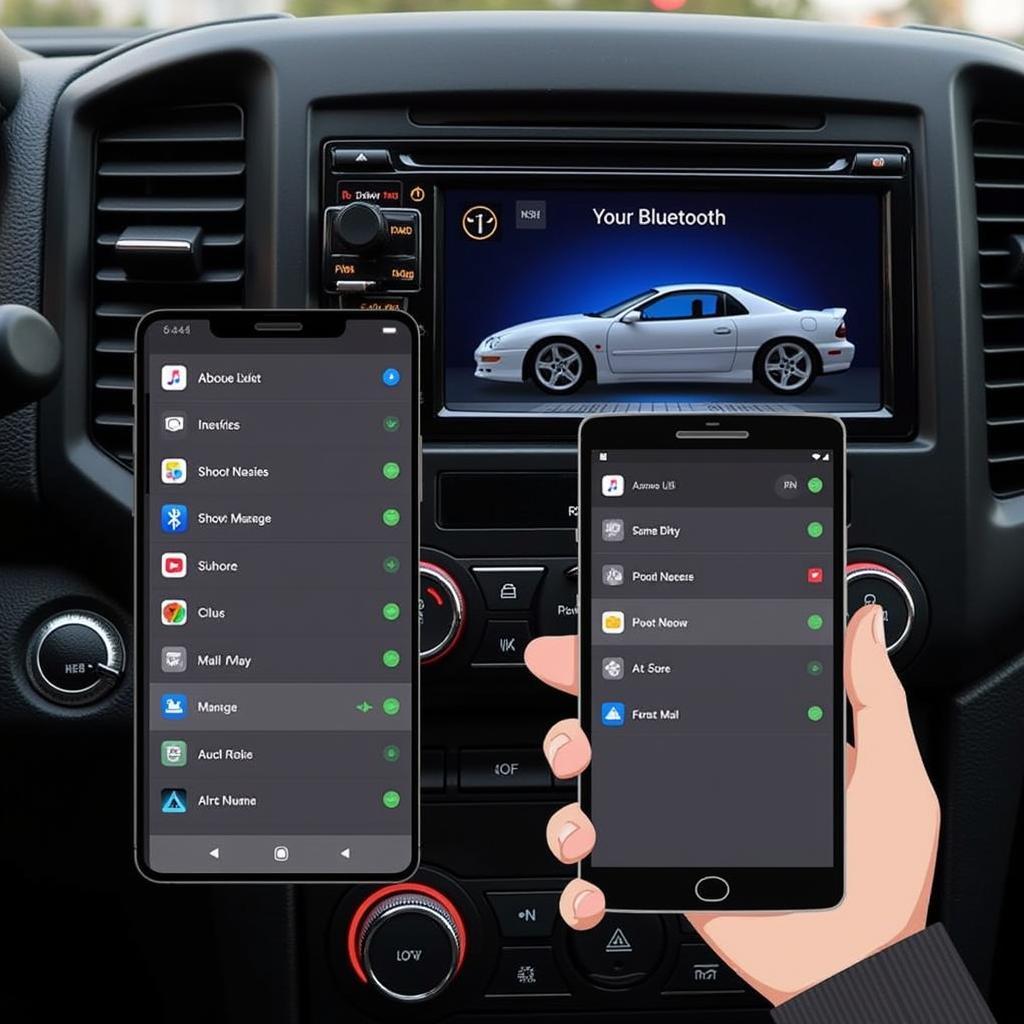Your brake warning light is a crucial indicator of potential issues with your vehicle’s braking system. If it illuminates, it’s important to investigate the cause promptly to avoid any serious problems. This article will explore the various reasons behind a lit brake warning light, helping you understand what might be happening and how to address the issue.
Common Causes of a Brake Warning Light
There are numerous reasons why your brake warning light might illuminate. Here’s a breakdown of the most frequent causes:
1. Low Brake Fluid
One of the most common reasons for a brake warning light is low brake fluid. Brake fluid is essential for maintaining pressure in the braking system, and its level can decrease due to several factors:
- Leaks: A leak in any part of the braking system can result in fluid loss. Common areas for leaks include brake lines, calipers, wheel cylinders, and master cylinder.
- Wear and tear: Over time, brake pads and rotors wear down, leading to a slight decrease in fluid level.
- Absorbing moisture: Brake fluid is hygroscopic, meaning it attracts moisture from the air. Moisture contamination can reduce its effectiveness and necessitate a fluid change.
2. Brake Pad/Shoe Wear
As your brake pads or shoes wear down, the sensor that monitors their thickness triggers the warning light. This is a reminder that your brake pads need replacement.
3. Faulty Brake System Sensors
Various sensors within the braking system monitor critical components and conditions. A malfunctioning sensor can lead to the warning light illuminating, even if there’s no actual problem with the brakes.
4. Parking Brake Malfunction
If your parking brake is engaged or not properly released, the brake warning light might come on. This is because the system detects pressure in the parking brake system.
5. Electrical Malfunction
Occasionally, an electrical issue within the vehicle’s warning system can cause the brake warning light to illuminate falsely. This could involve a faulty wiring connection, a problem with the warning light bulb itself, or a malfunctioning control unit.
What to Do When Your Brake Warning Light Turns On
If your brake warning light comes on, here’s what you should do:
- Pull over safely: It’s crucial to prioritize safety and pull over to a safe location as soon as possible.
- Check the brake fluid level: Open the hood and locate the brake fluid reservoir. If the fluid level is low, top it off with the correct type of brake fluid.
- Inspect the brake system: Look for any visible signs of leaks or damage to the brake lines, calipers, or other components.
- Get it checked by a mechanic: If you’re unsure about the cause or cannot resolve the issue yourself, take your vehicle to a qualified mechanic for a thorough inspection and diagnosis.
“My Brake Warning Light Came On, But My Brakes Seem Fine.”
- “Mark, a certified mechanic with over 20 years of experience, says, “Sometimes, drivers feel like their brakes work fine, but the warning light is still on. It’s crucial to get it checked. There might be a problem developing that isn’t obvious yet, and it’s better to address it before it becomes a safety hazard.”
FAQs
Q: Can I safely drive with the brake warning light on?
A: It’s best to avoid driving with the brake warning light on. While your brakes may still function, there’s a potential issue that needs addressing.
Q: How often should I have my brakes inspected?
A: Most manufacturers recommend having your brakes inspected at least once a year or every 6,000 miles.
Q: How much does it cost to fix a brake warning light?
A: The cost can vary significantly depending on the cause and the required repairs. A simple fluid top-off might be inexpensive, while a more complex repair involving calipers or brake lines could be more costly.
Q: What happens if I ignore a brake warning light?
A: Ignoring a brake warning light can lead to serious consequences, including brake failure, which can be dangerous and costly. It’s always better to address the issue promptly.


